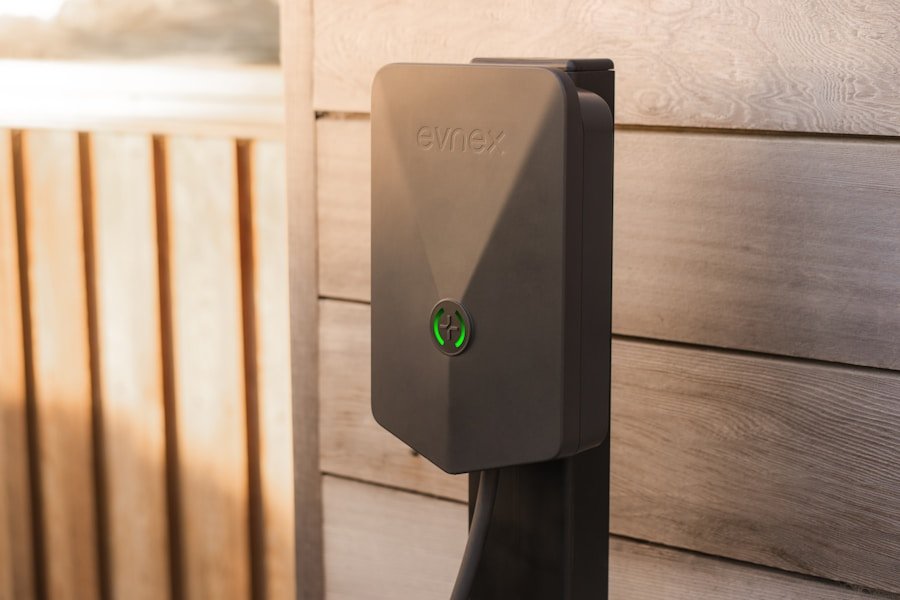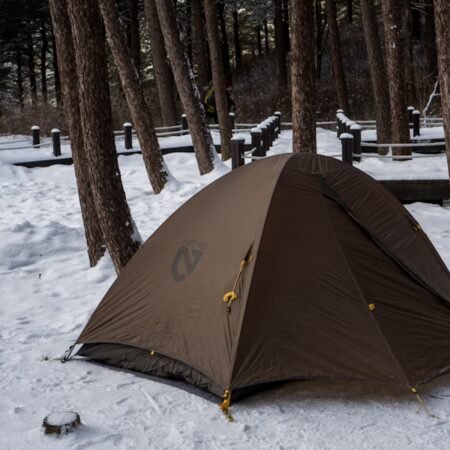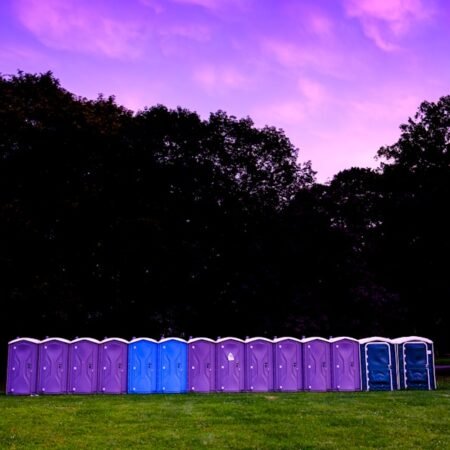When it comes to choosing the perfect camping hammock, it’s important to understand the different types available on the market. There are several options to consider, including traditional hammocks, jungle hammocks, and bridge hammocks. Traditional hammocks are the most common type and are typically made from lightweight, breathable materials such as nylon or polyester.
They are easy to set up and provide a comfortable place to relax and sleep while camping. Jungle hammocks, on the other hand, are designed for more rugged outdoor use and often come with built-in mosquito netting and rainfly to protect you from the elements. Bridge hammocks are a newer design that offers a flatter sleeping surface and can be more comfortable for some people.
Understanding the differences between these types of hammocks will help you choose the best option for your camping needs. When it comes to choosing the perfect camping hammock, it’s important to understand the different types available on the market. There are several options to consider, including traditional hammocks, jungle hammocks, and bridge hammocks.
Traditional hammocks are the most common type and are typically made from lightweight, breathable materials such as nylon or polyester. They are easy to set up and provide a comfortable place to relax and sleep while camping. Jungle hammocks, on the other hand, are designed for more rugged outdoor use and often come with built-in mosquito netting and rainfly to protect you from the elements.
Bridge hammocks are a newer design that offers a flatter sleeping surface and can be more comfortable for some people. Understanding the differences between these types of hammocks will help you choose the best option for your camping needs.
Key Takeaways
- Look for hammocks with built-in mosquito netting and rainfly for added protection and comfort during camping trips.
- Understand the differences between traditional hammocks, jungle hammocks, and bridge hammocks to choose the best option for your needs.
- Consider factors such as weight capacity, material durability, and ease of setup when selecting a camping hammock.
- Opt for hammocks with adjustable straps, breathable fabric, and integrated storage pockets for a more comfortable and functional camping experience.
- Follow tips for proper hanging angles, using tree-friendly straps, and adjusting tension to ensure a safe and enjoyable hammock setup.
Important Considerations When Choosing a Camping Hammock
When choosing a camping hammock, there are several important considerations to keep in mind. First and foremost, you’ll want to consider the weight capacity of the hammock. This will ensure that it can safely support your weight while you sleep or relax.
Additionally, you’ll want to consider the size of the hammock, as well as the length and width of the sleeping area. This will ensure that you have enough space to stretch out and get comfortable. Another important consideration is the material of the hammock.
Look for a durable, high-quality material that is both lightweight and breathable. This will ensure that your hammock is comfortable to sleep in and can withstand the rigors of outdoor use. When choosing a camping hammock, there are several important considerations to keep in mind.
First and foremost, you’ll want to consider the weight capacity of the hammock. This will ensure that it can safely support your weight while you sleep or relax. Additionally, you’ll want to consider the size of the hammock, as well as the length and width of the sleeping area.
This will ensure that you have enough space to stretch out and get comfortable. Another important consideration is the material of the hammock. Look for a durable, high-quality material that is both lightweight and breathable.
This will ensure that your hammock is comfortable to sleep in and can withstand the rigors of outdoor use.
Must-Have Features for a Comfortable and Functional Camping Hammock
When it comes to choosing a camping hammock, there are several must-have features that will ensure your comfort and functionality while camping. One important feature to look for is a built-in mosquito netting or rainfly. This will protect you from insects and the elements while you sleep.
Additionally, look for a hammock with strong, durable straps and carabiners for easy setup and secure attachment to trees or other anchor points. Another important feature to consider is a double-layered design, which provides added insulation and protection from the cold ground. Finally, look for a hammock with storage pockets or gear loops for keeping your essentials close at hand while you relax.
When it comes to choosing a camping hammock, there are several must-have features that will ensure your comfort and functionality while camping. One important feature to look for is a built-in mosquito netting or rainfly. This will protect you from insects and the elements while you sleep.
Additionally, look for a hammock with strong, durable straps and carabiners for easy setup and secure attachment to trees or other anchor points. Another important feature to consider is a double-layered design, which provides added insulation and protection from the cold ground. Finally, look for a hammock with storage pockets or gear loops for keeping your essentials close at hand while you relax.
Tips for Setting Up and Using Your Camping Hammock
| Feature | Description |
|---|---|
| Material | Durable and lightweight fabric such as nylon or polyester |
| Weight Capacity | Minimum weight capacity of 300 lbs for single hammocks and 400 lbs for double hammocks |
| Size | Single or double hammock options with adequate length and width for comfort |
| Setup | Easy and quick to set up with included suspension system or straps |
| Mosquito Net | Integrated mosquito net for bug protection during camping trips |
| Insulation | Ability to add insulation pads or underquilts for warmth in cooler weather |
| Portability | Compact and lightweight design for easy packing and carrying |
| Accessories | Additional accessories such as rainfly, gear pockets, and ridgeline for convenience |
Setting up and using a camping hammock can be a breeze with the right tips and techniques. First and foremost, it’s important to find sturdy anchor points such as trees or posts that are at least 12-15 feet apart. Once you’ve found your anchor points, use strong straps or suspension systems to securely attach your hammock.
Make sure to adjust the tension of your straps to achieve a comfortable sleeping position. When using your hammock, be mindful of weight distribution and avoid sudden movements that could cause tipping or flipping. Additionally, always follow manufacturer’s instructions for setup and use to ensure safety and proper functionality.
Setting up and using a camping hammock can be a breeze with the right tips and techniques. First and foremost, it’s important to find sturdy anchor points such as trees or posts that are at least 12-15 feet apart. Once you’ve found your anchor points, use strong straps or suspension systems to securely attach your hammock.
Make sure to adjust the tension of your straps to achieve a comfortable sleeping position. When using your hammock, be mindful of weight distribution and avoid sudden movements that could cause tipping or flipping. Additionally, always follow manufacturer’s instructions for setup and use to ensure safety and proper functionality.
How to Choose the Right Size and Weight Capacity for Your Camping Hammock
Choosing the right size and weight capacity for your camping hammock is crucial for ensuring a comfortable and safe experience while camping. When it comes to size, consider your height and preferred sleeping position to determine the appropriate length and width of your hammock. Additionally, consider whether you’ll be sharing your hammock with another person or if you prefer extra space for lounging.
When it comes to weight capacity, always choose a hammock that can safely support your weight plus any additional gear or accessories you may have with you while camping. It’s important to never exceed the weight capacity of your hammock to avoid potential damage or injury. Choosing the right size and weight capacity for your camping hammock is crucial for ensuring a comfortable and safe experience while camping.
When it comes to size, consider your height and preferred sleeping position to determine the appropriate length and width of your hammock. Additionally, consider whether you’ll be sharing your hammock with another person or if you prefer extra space for lounging. When it comes to weight capacity, always choose a hammock that can safely support your weight plus any additional gear or accessories you may have with you while camping.
It’s important to never exceed the weight capacity of your hammock to avoid potential damage or injury.
Top Accessories to Enhance Your Camping Hammock Experience
There are several accessories available that can enhance your camping hammock experience and provide added comfort and functionality while camping. One popular accessory is an underquilt or sleeping pad, which provides insulation and warmth during cooler nights. Another useful accessory is a gear loft or organizer that attaches to your hammock for storing essentials such as water bottles, flashlights, or snacks within easy reach.
Additionally, consider investing in a tarp or rainfly for added protection from rain or sun exposure while using your hammock. Finally, don’t forget about accessories such as bug nets, pillows, or blankets that can make your camping experience even more enjoyable. There are several accessories available that can enhance your camping hammock experience and provide added comfort and functionality while camping.
One popular accessory is an underquilt or sleeping pad, which provides insulation and warmth during cooler nights. Another useful accessory is a gear loft or organizer that attaches to your hammock for storing essentials such as water bottles, flashlights, or snacks within easy reach. Additionally, consider investing in a tarp or rainfly for added protection from rain or sun exposure while using your hammock.
Finally, don’t forget about accessories such as bug nets, pillows, or blankets that can make your camping experience even more enjoyable.
Maintenance and Care Tips for Your Camping Hammock
Proper maintenance and care of your camping hammock will ensure its longevity and functionality for many camping trips to come. After each use, inspect your hammock for any signs of wear or damage such as fraying straps or tears in the fabric. Clean your hammock regularly according to manufacturer’s instructions using mild soap and water, then allow it to air dry completely before storing it away.
When not in use, store your hammock in a cool, dry place away from direct sunlight or moisture to prevent mold or mildew growth. Additionally, always follow manufacturer’s guidelines for storage and maintenance to keep your camping hammock in top condition. Proper maintenance and care of your camping hammock will ensure its longevity and functionality for many camping trips to come.
After each use, inspect your hammock for any signs of wear or damage such as fraying straps or tears in the fabric. Clean your hammock regularly according to manufacturer’s instructions using mild soap and water, then allow it to air dry completely before storing it away. When not in use, store your hammock in a cool, dry place away from direct sunlight or moisture to prevent mold or mildew growth.
Additionally, always follow manufacturer’s guidelines for storage and maintenance to keep your camping hammock in top condition. In conclusion, choosing the perfect camping hammock involves understanding the different types available on the market, considering important factors such as size and weight capacity, and selecting must-have features that provide comfort and functionality while camping. With the right tips for setup and use, as well as top accessories to enhance your experience, you can enjoy many memorable camping trips with your trusty hammock by your side.
By following maintenance and care tips, you can ensure that your camping hammock remains in top condition for years of outdoor adventures ahead.
FAQs
What are the must-have features to consider when choosing a camping hammock?
Some must-have features to consider when choosing a camping hammock include the material, weight capacity, suspension system, bug net, rainfly, and ease of setup.
What are the different materials used for camping hammocks?
Camping hammocks are commonly made from nylon, polyester, or a blend of both. These materials are lightweight, durable, and quick-drying, making them ideal for outdoor use.
What is the weight capacity of a camping hammock?
The weight capacity of a camping hammock can vary, but most are designed to support between 250 to 500 pounds. It’s important to check the weight capacity before purchasing to ensure it can accommodate your needs.
What is a suspension system for a camping hammock?
A suspension system for a camping hammock typically includes straps and carabiners that are used to attach the hammock to trees or other anchor points. This system should be strong, adjustable, and easy to set up.
Why is a bug net important for a camping hammock?
A bug net is important for a camping hammock to protect you from insects and bugs while you sleep. It can provide a comfortable and bug-free sleeping environment, especially in areas with high insect activity.
What is a rainfly and why is it important for a camping hammock?
A rainfly is a waterproof cover that is used to protect the hammock and its occupants from rain and moisture. It is important for a camping hammock to provide shelter and keep you dry during inclement weather.
How important is ease of setup when choosing a camping hammock?
Ease of setup is important when choosing a camping hammock, especially for beginners or those who want a hassle-free experience. Look for hammocks that come with simple and intuitive setup instructions and require minimal effort to assemble.













